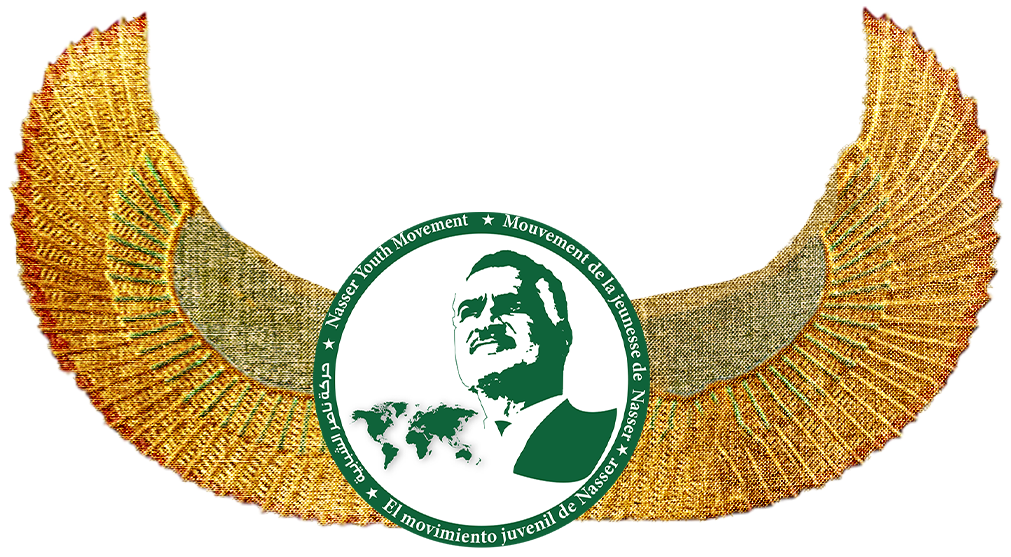Collections of the Egyptian Museum in Cairo (Part One)
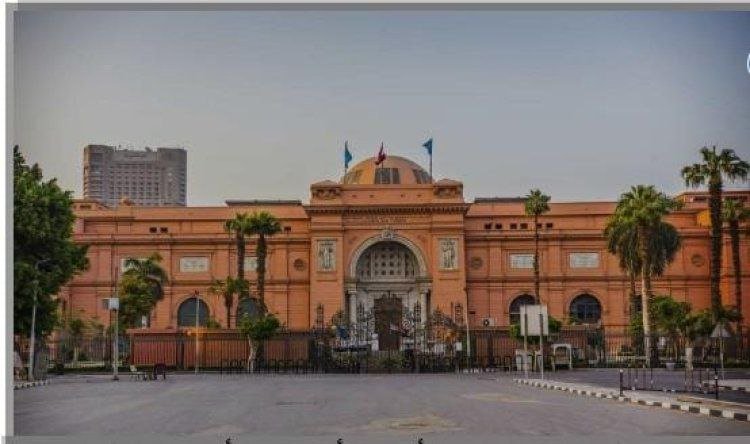
Reviewed by: Wafaa El-houseiny
Translated by: Zeinb Mohamed
Collections of the Egyptian Museum in Cairo (Part One)
August 23, 2023 - 00:38
Zainab Makki wrote
Located in the heart of the Egyptian capital, Cairo, on the northern side of Tahrir Square, the Egyptian Museum is one of the largest and most famous international museums. Its establishment dates back to 1835. The museum contains many archaeological collections dating back to ancient Egypt. Here are the most important pieces on the first floor:
Rosetta Stone
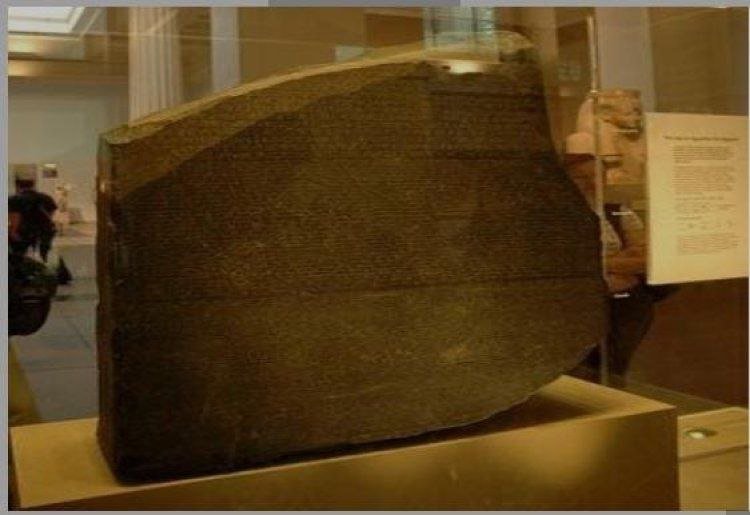
First and foremost, the learner of Egyptian civilization must keep in mind a set of constants, the most important of which is a set of elements that open the door for anyone who wants to know something about Egyptian civilization. The Rosetta Stone comes on top of these constants.
It is a black basalt stone. The text was recorded on the stone during the reign of King Ptolemy V in 196 BC.
After the soldiers of the French expedition discovered this stone while they were digging a trench around the Castle of Saint-Julien near Rosetta, in 1799 AD, the young Frenchman, Jean-François Champollion, began a long journey of research and studies to decipher the codes of this stone. In 1822, Champollion announced to the world from Paris that he was able to decode the ancient Egyptian language. Thus Champollion had laid the first building blocks in the edifice of the ancient Egyptian language. With this knowledge, the mystery began to be erased from Egyptian civilization, and Egyptology began to find its way strongly among the other sciences.
Narmar prayer
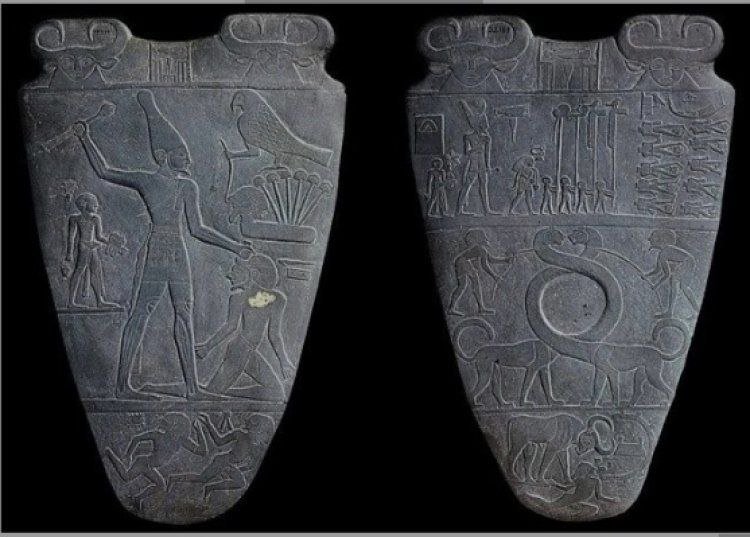
It is the first of the Pharaonic historical paintings known as Narmer as it was written on it.
It was written and drawn during the reign of Pharaoh Narmer, who made Upper Egypt and Lower Egypt united. It embodied the scene of the unification of the two countries, and the victory of the Pharaonic king over his enemies.
In the upper part of the painting, on the first side, there are two sides of a woman with the ears and horns of a cow. She is the goddess Mayet, who was named Hathor. Between the two sides we find the front of the palace (or the edifice) with the name Narmer engraved inside, and below we find a picture of a depicted pharaoh wearing the white crown of Upper Egypt, holding a hammer in one hand and the hair of one of his northern enemies in his other hand.
As for the second side, we find in the upper part of the carved image the same faces of the god, underneath which is a scene depicting the end of the war. When the king wins and unites Egypt, the Egyptian Empire begins.
Statue of King Djoser
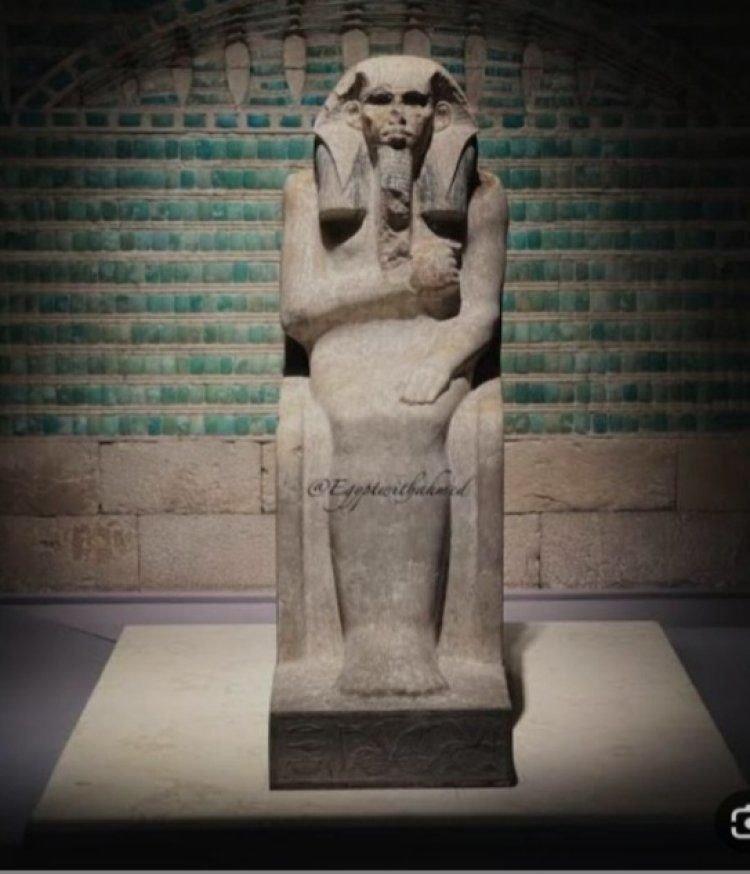
Djoser was an ancient Egyptian king who belonged to the Third Dynasty of the Old Kingdom of Egypt. The main evidence of Djoser's existence is his life-size painted limestone statue, which was discovered during excavations in Saqqara in 1925. The statue was found in a closed room called the crypt, northeast of the funerary complex of King Djoser in Saqqara, the oldest known life-sized statue in Egypt.
Depicted sitting on his throne and surrounded by a jubilee robe, the statue was entirely covered in white plaster. The deep-set eyes were inlaid, and the king had a false beard and wore a black wig topped with a royal mongoose headdress.
Some modern Egyptologists believe that he was the actual founding ruler of the Third Dynasty of the Old Kingdom of Egypt. Although this information has not yet been fully confirmed, according to ancient inscriptions, his reign was marked by many military campaigns in the Sinai Peninsula in order to conquer the people of that land as well as to extract precious metals from the mines there.
The most famous is the Step Pyramid in Saqqara, which he built to be his tomb. It is the first of the pyramids in Egypt. This pyramid was built in the form of a series of terraces, arranged on top of each other in a conical shape. It is also known that Djoser built many buildings in Heliopolis and Giblin, which were famous Egyptian cities in that era.
Statue of King Amenhotep III and Queen Tiye.
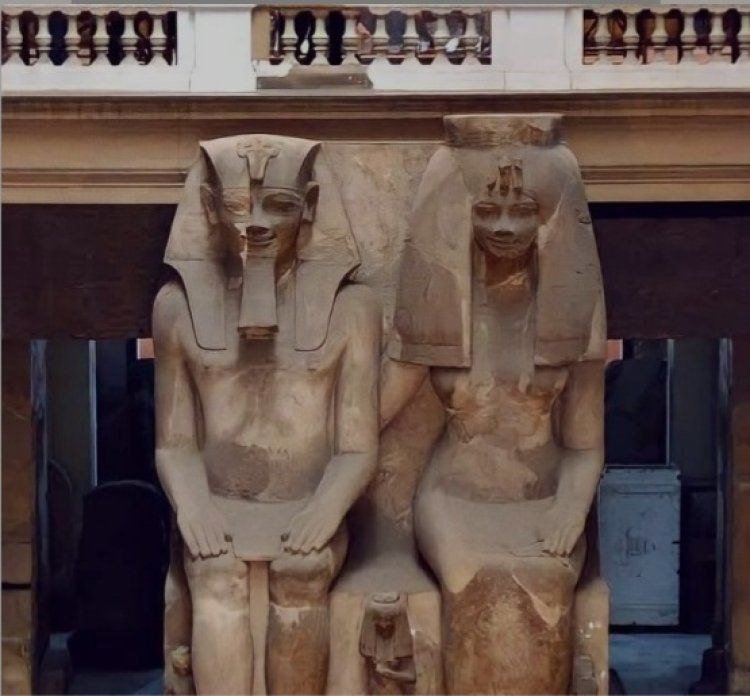 This huge statue is a group statue of the Egyptian Pharaoh Amenhotep III, his wife, Queen Tiye, and three daughters.
This huge statue is a group statue of the Egyptian Pharaoh Amenhotep III, his wife, Queen Tiye, and three daughters.
It is the largest collection of an ancient Egyptian family ever carved.
Description of the statue: - The almond-shaped eyes and arched eyebrows are typical of the late 18th Dynasty family style. Amenhotep III wears a mongoose headdress with a cobra, a false beard, and a kilt, while resting his hands on his knees.
As for Queen Tiye, she sits to his left with her right arm around her husband's waist. Her height is equal to the height of the Pharaoh, which indicates her prominent position. She wears tight, ankle-length clothes, and a large wig with an eagle headdress.
As for the three little princesses, one of them stands in the middle between her parents' legs and is depicted as a mature woman in a tight dress and a full wig.
On the far left of Amenhotep's legs stands the youngest daughter, while on the far right of Queen Tiye's legs, the other princess stands.
Statue of King Senusret III
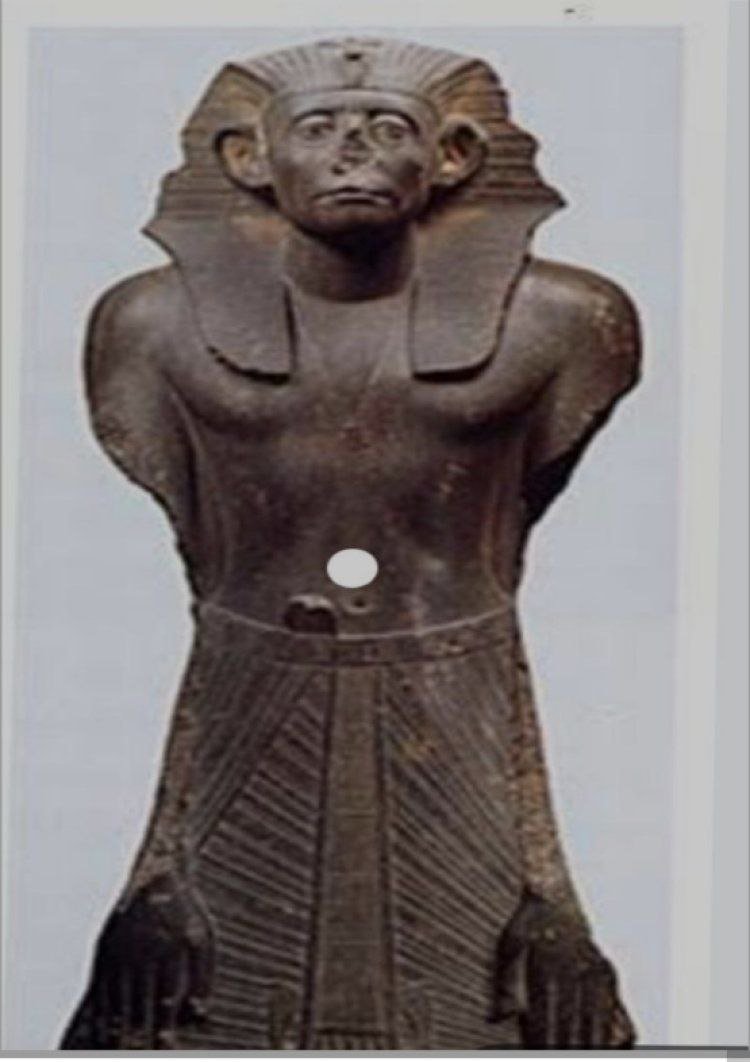 This statue, carved from black granite, was found in the forecourt of the temple of Mentuhotep II at Deir el-Bahri and was one of six statues dedicated by Senusret III to the temple of his predecessor, Mentuhotep.
This statue, carved from black granite, was found in the forecourt of the temple of Mentuhotep II at Deir el-Bahri and was one of six statues dedicated by Senusret III to the temple of his predecessor, Mentuhotep.
This is the first known statue representing the king in a prayer position, wearing a folded mongoose headdress with a cobra on his forehead and a folded kilt.
Small statue of King Khufu
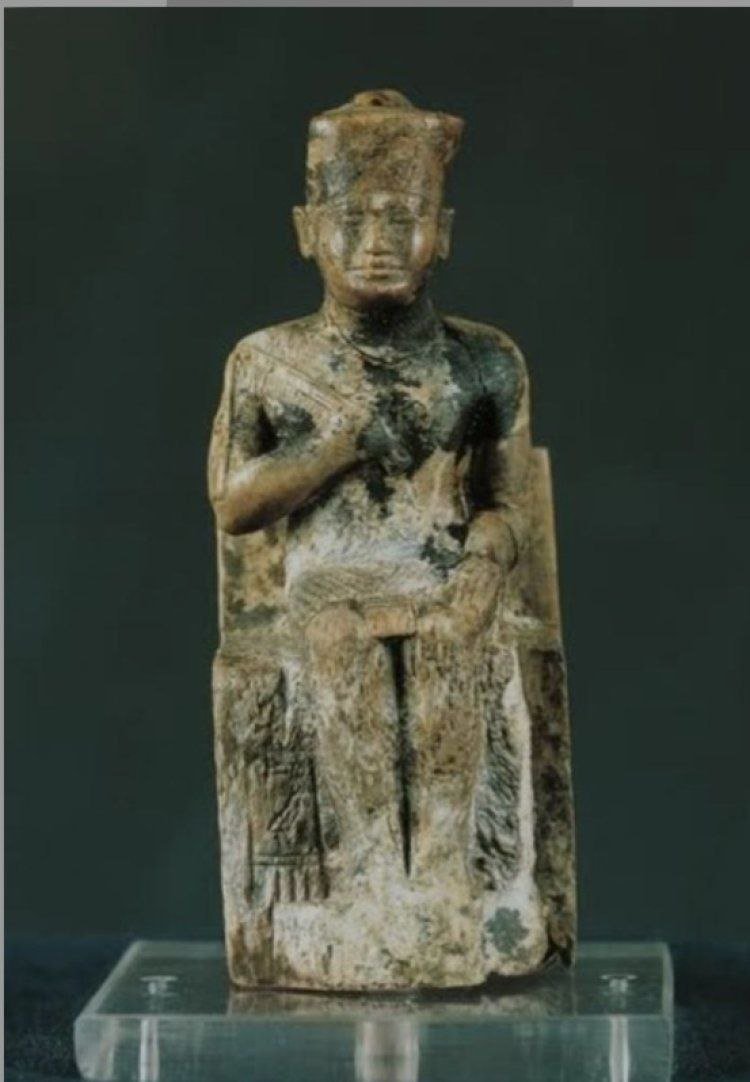
King Khufu was the builder of the Great Pyramid, and this is the only surviving statue known to date of King Khufu.
The king sits on the throne, wearing the red crown of Lower Egypt and a small kilt, and in his right hand above his chest, he holds a liquid, while he places his left hand on his left knee.
The Triad of Menkaure
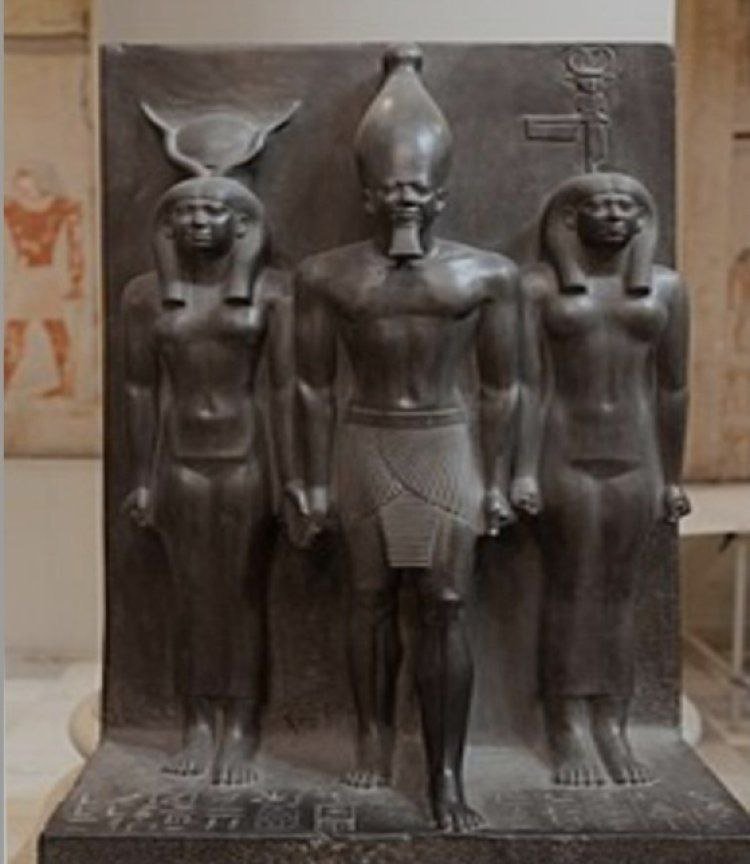 This trinity represents King Menkaure standing between the goddess Hathor and the local goddess of the city of Anbu.
This trinity represents King Menkaure standing between the goddess Hathor and the local goddess of the city of Anbu.
King Menkaure was the fifth king in the Fourth Dynasty and the son of King Khafre. He is the owner of the third pyramid in Giza, and he ruled for 25 years.
The statue of the king stands between the goddess Hathor, the goddess of love, music, motherhood, and the local goddess of the city of Anbu, wearing the white crown of Upper Egypt with a fake beard. The artist succeeded in showing the facial features in a precise way, and the details of the body are made in an ideal way, represented by the muscles of the chest, arms, legs, knees, and toes
Rahotep and Nofret
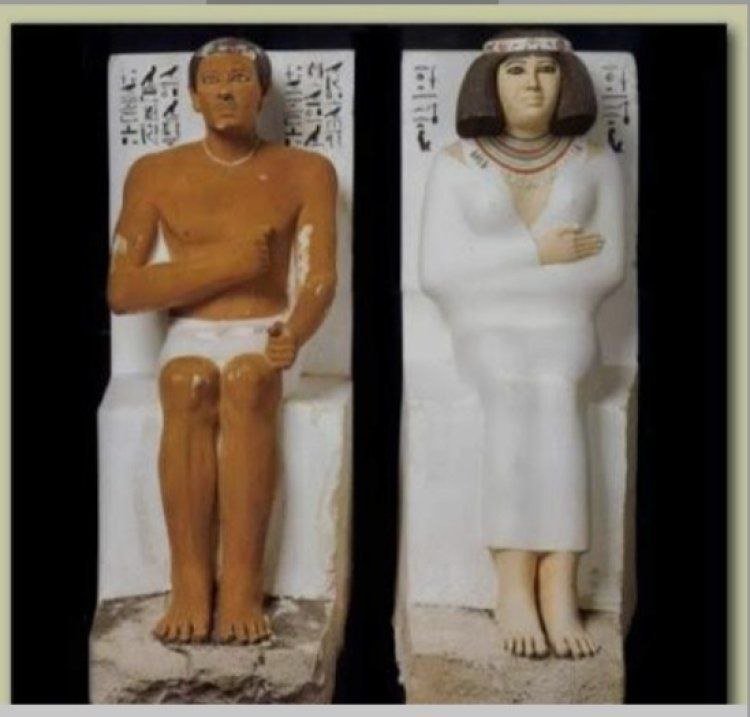
These extraordinary statues are kept in excellent condition, appearing as if they were freshly painted. What distinguishes the statues is that they retain their eyes, inlaid with realistic crystals, which astonished the Egyptian workers who opened the tomb for the first time. They looked as if they were staring at them, and in the light of the torch in the dark tomb, they seemed alive, so the workers drowned in terror and were in a state of panic. In 1871 at Meidum, the statues were discovered 100 km from Cairo, by Albert Daninus, an assistant to the French explorer and archaeologist Auguste Mariette.
Kaabar
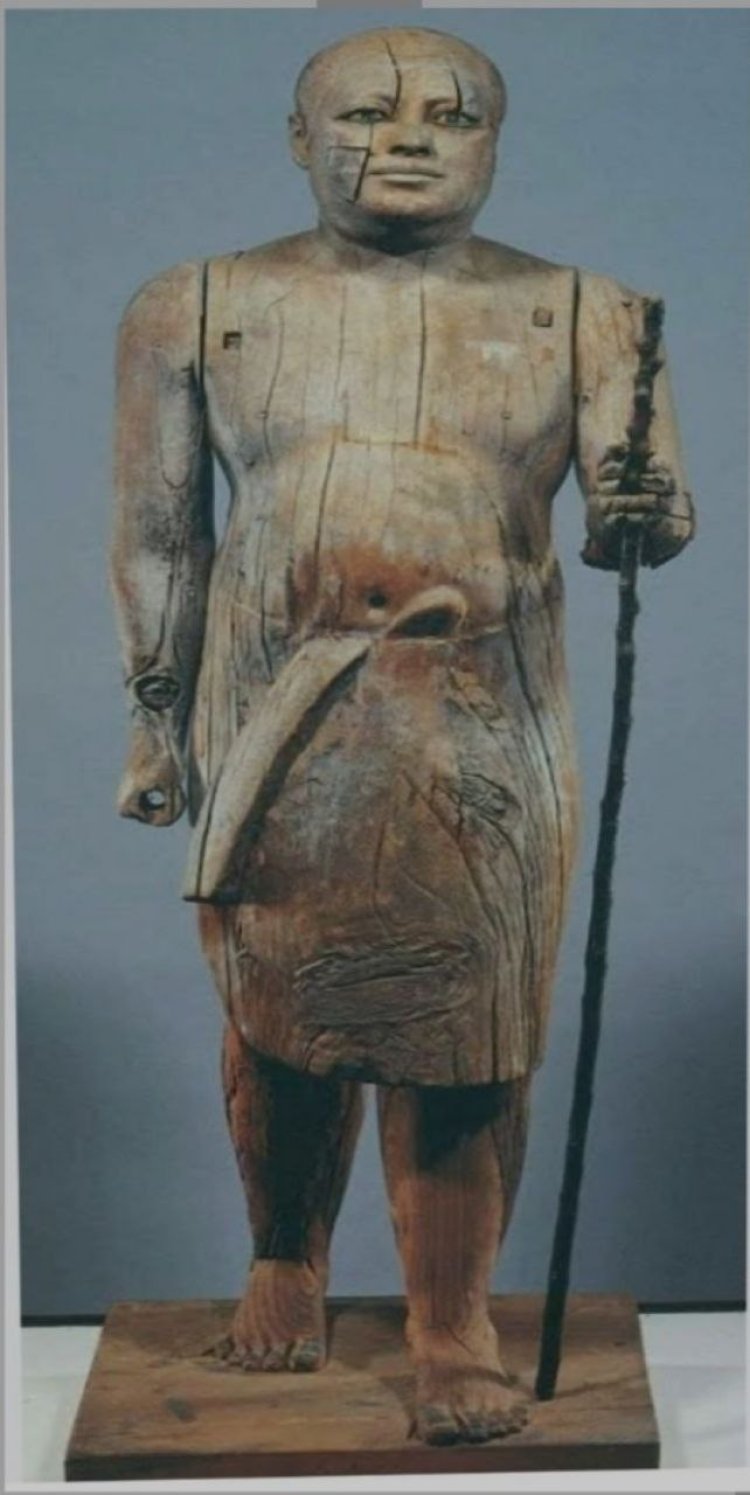 Kaabar was an ancient Egyptian writer and priest who lived between the late Fourth Dynasty and the beginning of the Fifth Dynasty, around 2500 BC. Kaabar was known as Sheikh al-Balad [Arabic title for the chief of the village].
Kaabar was an ancient Egyptian writer and priest who lived between the late Fourth Dynasty and the beginning of the Fifth Dynasty, around 2500 BC. Kaabar was known as Sheikh al-Balad [Arabic title for the chief of the village].
His terrace at Saqqara was discovered by Auguste Mariette in the Saqqara necropolis, north of the Step Pyramid of Djoser. From the same terrace also came a wooden statue of a woman, often considered the statue of Kaabar's wife.
The miraculous statue of King Khafre
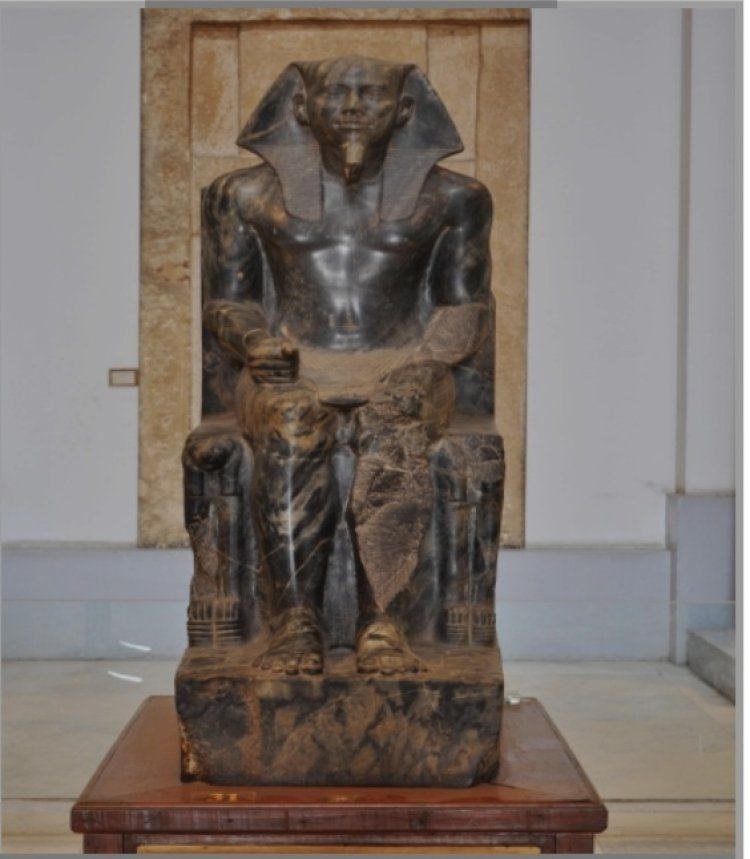
The statue is made of Durant stone, which ranks second in the ranking of the hardest stones in the universe after diamonds, i.e., there is no metal or rock capable of shaping it except only diamonds. In the 1980s, the Very famous Egyptian sculptor Mohamed Musa, who specializes in carving statues directly with solid stones, tried to carve a dove statue out of Durant stone, but he was unable to finish it. He left it without completing it, despite his long experience and the modern tools available for it. If anything, this indicates the greatness and genius of the ancient Egyptian artist, and this is due to the reason why he was called the miraculous statue.
"If an exhibition was created for the greatest artistic miracles of mankind, I would choose this statue to embody the greatest achievements of the ancient Egyptian artist," said the most famous Egyptologist, Justin Maspero.
Sources:
Egyptmonuments.gov.com-
The Golden Tourist Guide Book from 293 to 260-
Image source
Egyptmonuments.gov.com
